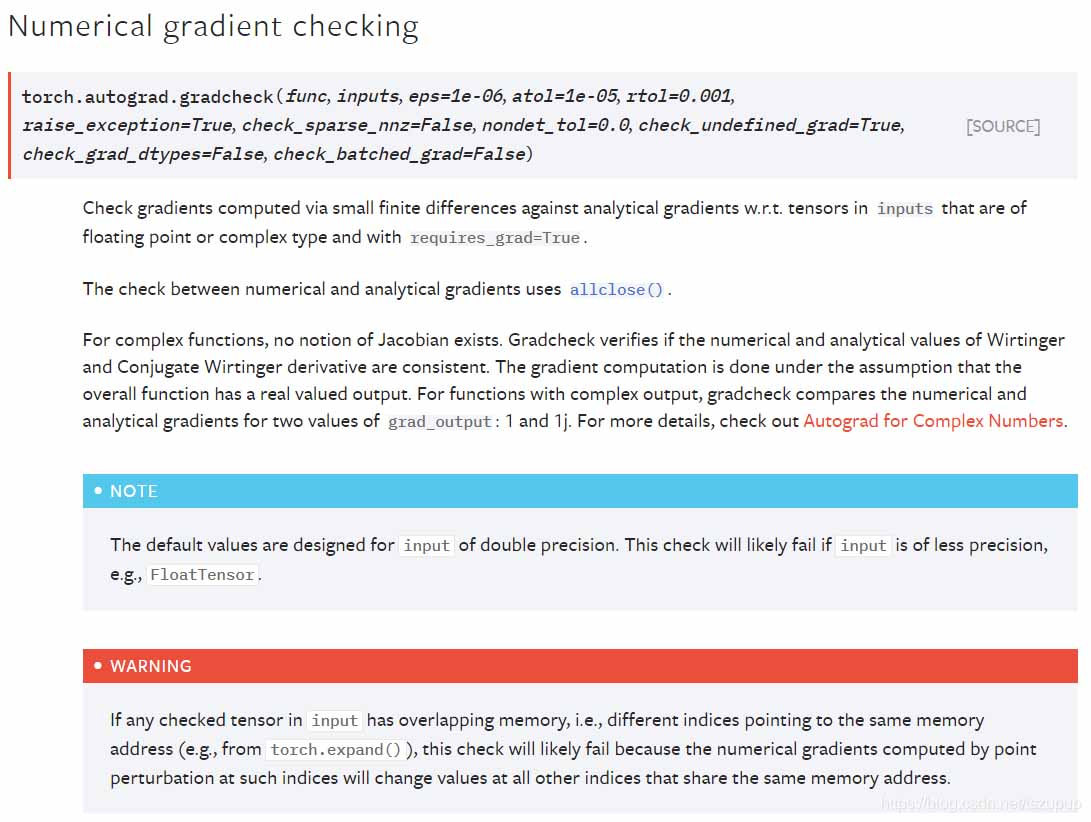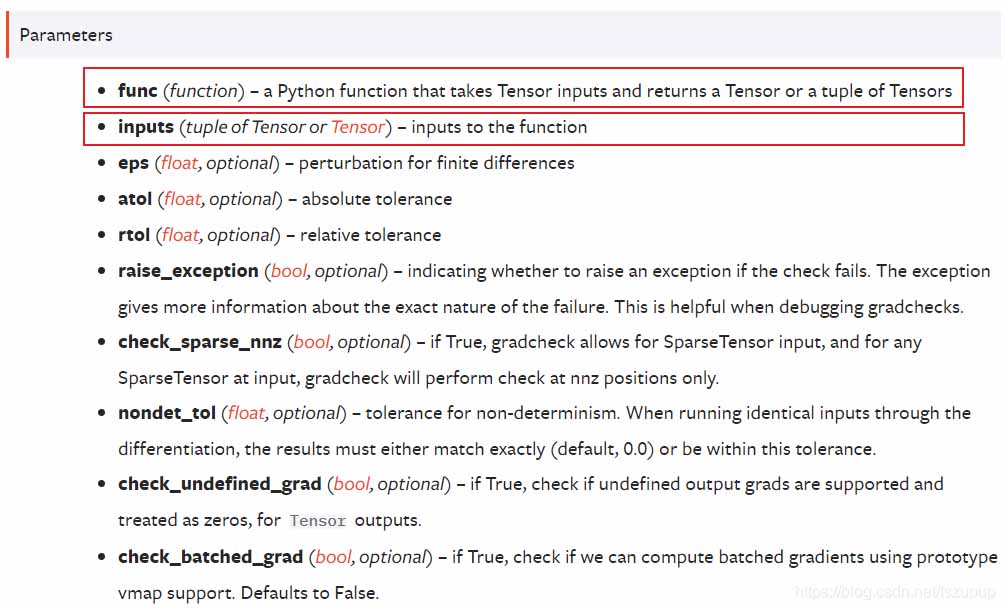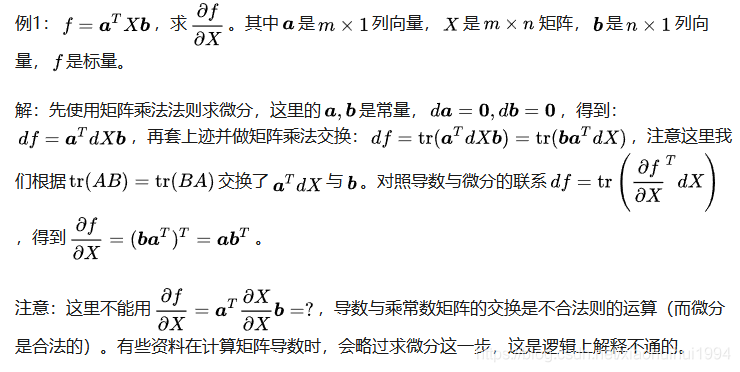PyTorch 如何检查模型梯度是否可导
一、PyTorch 检查模型梯度是否可导
当我们构建复杂网络模型或在模型中加入复杂操作时,可能会需要验证该模型或操作是否可导,即模型是否能够优化,在PyTorch框架下,我们可以使用torch.autograd.gradcheck函数来实现这一功能。
首先看一下官方文档中关于该函数的介绍:


可以看到官方文档中介绍了该函数基于何种方法,以及其参数列表,下面给出几个例子介绍其使用方法,注意:
Tensor需要是双精度浮点型且设置requires_grad = True
第一个例子:检查某一操作是否可导
from torch.autograd import gradcheck
import torch
import torch.nn as nn
inputs = torch.randn((10, 5), requires_grad=True, dtype=torch.double)
linear = nn.Linear(5, 3)
linear = linear.double()
test = gradcheck(lambda x: linear(x), inputs)
print("Are the gradients correct: ", test)
输出为:
第二个例子:检查某一网络模型是否可导Are the gradients correct: True
from torch.autograd import gradcheck
import torch
import torch.nn as nn
# 定义神经网络模型
class Net(nn.Module):
def __init__(self):
super(Net, self).__init__()
self.net = nn.Sequential(
nn.Linear(15, 30),
nn.ReLU(),
nn.Linear(30, 15),
nn.ReLU(),
nn.Linear(15, 1),
nn.Sigmoid()
)
def forward(self, x):
y = self.net(x)
return y
net = Net()
net = net.double()
inputs = torch.randn((10, 15), requires_grad=True, dtype=torch.double)
test = gradcheck(net, inputs)
print("Are the gradients correct: ", test)
输出为:
二、Pytorch求导 1.标量对矩阵求导Are the gradients correct: True

验证:
>>>import torch
>>>a = torch.tensor([[1],[2],[3.],[4]]) # 4*1列向量
>>>X = torch.tensor([[1,2,3],[5,6,7],[8,9,10],[5,4,3.]],requires_grad=True) #4*3矩阵,注意,值必须要是float类型
>>>b = torch.tensor([[2],[3],[4.]]) #3*1列向量
>>>f = a.view(1,-1).mm(X).mm(b) # f = a^T.dot(X).dot(b)
>>>f.backward()
>>>X.grad #df/dX = a.dot(b^T)
tensor([[ 2., 3., 4.],
[ 4., 6., 8.],
[ 6., 9., 12.],
[ 8., 12., 16.]])
>>>a.grad b.grad # a和b的requires_grad都为默认(默认为False),所以求导时,没有梯度
(None, None)
>>>a.mm(b.view(1,-1)) # a.dot(b^T)
tensor([[ 2., 3., 4.],
[ 4., 6., 8.],
[ 6., 9., 12.],
[ 8., 12., 16.]])
2.矩阵对矩阵求导


验证:
>>>A = torch.tensor([[1,2],[3,4.]]) #2*2矩阵
>>>X = torch.tensor([[1,2,3],[4,5.,6]],requires_grad=True) # 2*3矩阵
>>>F = A.mm(X)
>>>F
tensor([[ 9., 12., 15.],
[19., 26., 33.]], grad_fn=<MmBackward>)
>>>F.backgrad(torch.ones_like(F)) # 注意括号里要加上这句
>>>X.grad
tensor([[4., 4., 4.],
[6., 6., 6.]])
注意:
requires_grad为True的数组必须是float类型
进行backgrad的必须是标量,如果是向量,必须在后面括号里加上torch.ones_like(X)
以上为个人经验,希望能给大家一个参考,也希望大家多多支持软件开发网。
相关文章
Rebecca
2021-05-19
Cynthia
2020-09-01
Dulcea
2023-05-02
Kirima
2023-05-12
Fawn
2023-05-12
Jacinda
2023-05-13
Bella
2023-05-13
Adelaide
2023-05-13
Tani
2023-05-27
Tanisha
2023-05-27
Kande
2023-05-27
Tricia
2023-05-27
Pandora
2023-07-01
Xylona
2023-07-20
Radinka
2023-07-20
Dorothy
2023-07-20
Carly
2023-07-20
Irma
2023-07-20
Posy
2023-07-20